philadelphia
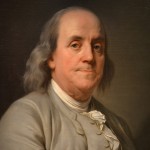
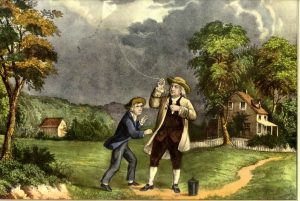 Firefighter and Benjamin Franklin…not usually thought of in the same sentence, but really, they should be. In 1736, Benjamin Franklin was already a young man of influence, but his ambitions didn’t stop at just a few. Most of us think of Benjamin Franklin as a scientist, inventor, founding father, prankster, and writer, but firefighter…hmmmmm, not so much. Nevertheless, Benjamin Franklin was a visionary. He saw a problem and decided to fix it.
Firefighter and Benjamin Franklin…not usually thought of in the same sentence, but really, they should be. In 1736, Benjamin Franklin was already a young man of influence, but his ambitions didn’t stop at just a few. Most of us think of Benjamin Franklin as a scientist, inventor, founding father, prankster, and writer, but firefighter…hmmmmm, not so much. Nevertheless, Benjamin Franklin was a visionary. He saw a problem and decided to fix it.
By 1736 Franklin had adopted Philadelphia, Pennsylvania as his home, but during a visit to his hometown of Boston, Massachusetts, he witnessed a fire, and his mind went into overdrive. What he saw was that the safety precautions to keep fire from spreading seemed to be far more advanced in Boston than in Philadelphia. At that time, Philadelphia’s infrastructure was basically a maze of wooden buildings and houses squeezed together in such a way that it was almost like kindling for a bonfire. Franklin saw this decided that something needed to be done. So, he published his findings in his own Philadelphia Gazette. In doing so, he turned up a different kind of heat. Before long, he was able to round up about 30 of his friends and fellow business owners who were interested. So together, the founded the Union Fire Company. Franklin made sure that The Union Fire Company was a non-profit organization…run completely by volunteers. What made this attractive to these business owners is that it was essentially a promise, to always have each other’s backs, if a fire broke out on or close to one of their properties. Not only were they promising to help extinguish the flames and save homes, but each member was required to keep a heavy-duty bag in which to smuggle out any possessions they could salvage as well. It was a code of honor to try, in the midst of disaster, to salvage whatever they could of the lives of the occupants. The Union Fire Company quickly became the biggest fire relief company in the Colonies, or as they later became, the United States.
Never being one to just sit back and tell others what to do, Benjamin Franklin became a volunteer firefighter himself. Soon, there were six volunteer corps established in Philadelphia. This fire company was the first volunteer fire company of its kind in the United States. When people saw how well the system worked, volunteer fire companies sprung up across the city and soon all over the country. We think of Benjamin Franklin 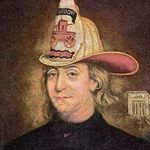
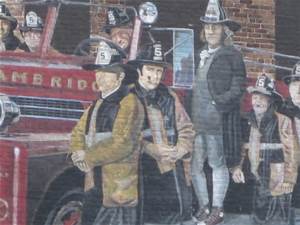 as many things, but in reality, we should maybe think of him as much more than we do. He was the brainchild behind the Great Compromise, which created the Congress we still have today. He was also the first fireman in another way. He “put out the fiery debates” and created a sense of compromise and peace among the founding fathers of our nation too, but he was an actual firefighter in that he actually fought the fires in his city.
as many things, but in reality, we should maybe think of him as much more than we do. He was the brainchild behind the Great Compromise, which created the Congress we still have today. He was also the first fireman in another way. He “put out the fiery debates” and created a sense of compromise and peace among the founding fathers of our nation too, but he was an actual firefighter in that he actually fought the fires in his city.


 As a young man, my grand-nephew, James Renville wanted nothing more than to leave Wyoming and travel abroad. He thought he might want to live abroad too, or at least somewhere bigger than Wyoming. Covid-19 changed that in a big way, and lately, Wyoming isn’t looking so bad to him. In fact, he has developed an appreciation for his hometown and home state. With all the craziness and chaos going on everywhere else, James said that he realized how blessed he is to live in Wyoming where Covid didn’t touch him or leave him unemployed. In fact, the last year has been a year of change, soul searching, revelation, and really just finding out who James is and what he wants out of life. Everyone needs to have a time like that, and this year was just that for James…a year of growth and personal development. James also spent a lot of time with his dad, Jim Renville. They took the time to become best friends.
As a young man, my grand-nephew, James Renville wanted nothing more than to leave Wyoming and travel abroad. He thought he might want to live abroad too, or at least somewhere bigger than Wyoming. Covid-19 changed that in a big way, and lately, Wyoming isn’t looking so bad to him. In fact, he has developed an appreciation for his hometown and home state. With all the craziness and chaos going on everywhere else, James said that he realized how blessed he is to live in Wyoming where Covid didn’t touch him or leave him unemployed. In fact, the last year has been a year of change, soul searching, revelation, and really just finding out who James is and what he wants out of life. Everyone needs to have a time like that, and this year was just that for James…a year of growth and personal development. James also spent a lot of time with his dad, Jim Renville. They took the time to become best friends.
James isn’t a typical man in his twenties. He is more reserved, and a lot less the “wild and crazy” type of person that many people his age are. It’s not that James just wants to sit around doing nothing, and there is a bit of the “wild and crazy” in him too. That part of James comes out in his love of aggressive inline skating as 
 he calls it. I call it scary!! Anyway, James is really good at rollerblading…is that the same as inline skating? I think so. Yes, I’m told it is. He also enjoys running/jogging and playing pool. This last year has inspired James to some new beginnings too. James has decided to take up skiing and hiking. I wouldn’t ski, but hiking is my cup of tea, for sure.
he calls it. I call it scary!! Anyway, James is really good at rollerblading…is that the same as inline skating? I think so. Yes, I’m told it is. He also enjoys running/jogging and playing pool. This last year has inspired James to some new beginnings too. James has decided to take up skiing and hiking. I wouldn’t ski, but hiking is my cup of tea, for sure.
James has still done some traveling this past year, because there is a certain girl who has captured his heart, and the hearts of the whole family…Manuela Ortiz, who has been working in New Jersey. James and Manuela have been dating about two years, and while visiting her in New Jersey, James took her to Philadelphia where he popped the question, and she said “Yes,” so in October, they got engaged.
James’ mom, who is my niece, Toni Chase tells me that Manuela is a gift from God, and the icing on the cake of the last year. She is the a big part of the new beginning, but before James could see the gift that Manuela is, he has to seek his own happiness. You can only share your happiness when you are truly happy. This past year many people felt depressed, but James wouldn’t let that get to him. He shunned the depression that many people fought. As James made his journey to happiness, he discovered that while he was truly happy now, he didn’t want to continue the journey without Manuela by his side. They really do compliment each other and are very supportive of one another. James knew that Manuela was the one he wanted to walk the road ahead with 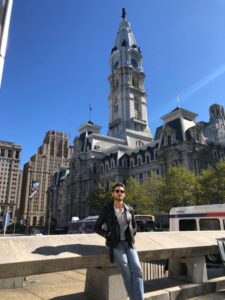

 him. James was always a quiet man, but really he is selective about who he lets into his life, and that is a good thing. Once he knows a person, he isn’t quiet at all, but has good things to say, and much to contribute. Like many people, me included, James is not outgoing, but when he spots his people he knows them and he’s very down to earth. He is a great blessing to all who have the privilege of calling him their friend. Today is James’ birthday. Happy birthday James!! Have a great day!! We love you!!
him. James was always a quiet man, but really he is selective about who he lets into his life, and that is a good thing. Once he knows a person, he isn’t quiet at all, but has good things to say, and much to contribute. Like many people, me included, James is not outgoing, but when he spots his people he knows them and he’s very down to earth. He is a great blessing to all who have the privilege of calling him their friend. Today is James’ birthday. Happy birthday James!! Have a great day!! We love you!!
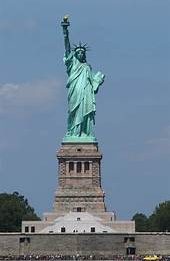 I have been to and inside the Statue of Liberty, and it is a place I’ll never forget. I was a teenager at the time, but I can still vividly picture the inside, as well as the outside. I think the thing that most stuck in my head is that to go up into the statue was a rather tight corridor. The arm was closed when we were there, but we didn’t really know why. For a time, especially after 9-11, no one was allowed to go into the Statue of Liberty at all, for fear of another terrorist attack.
I have been to and inside the Statue of Liberty, and it is a place I’ll never forget. I was a teenager at the time, but I can still vividly picture the inside, as well as the outside. I think the thing that most stuck in my head is that to go up into the statue was a rather tight corridor. The arm was closed when we were there, but we didn’t really know why. For a time, especially after 9-11, no one was allowed to go into the Statue of Liberty at all, for fear of another terrorist attack.
Prior to the 9-11 concerns, the Statue of Liberty was examined by French and American engineers for structural stability in 1982, as part of the planning for its centennial in 1986. Following the examination, it was announced that the statue was in need of considerable restoration. Careful examination had revealed that the right arm  had been improperly attached to the main structure. It was swaying more and more when strong winds blew and there was a significant risk of structural failure. This is information that I’m thankful I didn’t have when I went up into the statue in 1973. I recall being disappointed that we couldn’t go up in the arm then, but apparently they knew of the issues even then. Of further concern, the head had been installed 2 feet off center, and one of the rays was wearing a hole in the right arm when the statue moved in the wind. All the problems warranted the repairs done in 1984. She also got a nose job and her arm was shifted slightly to a better position. This information, though not well know, was really bad news, when you think about it. The statue had been standing in this place for 96 years by the time these flaws were discovered. Imagine what could have happened, especially with the arm improperly
had been improperly attached to the main structure. It was swaying more and more when strong winds blew and there was a significant risk of structural failure. This is information that I’m thankful I didn’t have when I went up into the statue in 1973. I recall being disappointed that we couldn’t go up in the arm then, but apparently they knew of the issues even then. Of further concern, the head had been installed 2 feet off center, and one of the rays was wearing a hole in the right arm when the statue moved in the wind. All the problems warranted the repairs done in 1984. She also got a nose job and her arm was shifted slightly to a better position. This information, though not well know, was really bad news, when you think about it. The statue had been standing in this place for 96 years by the time these flaws were discovered. Imagine what could have happened, especially with the arm improperly 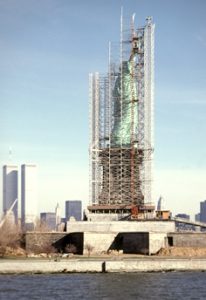 installed. The armature structure was badly corroded, and about two percent of the exterior plates needed to be replaced. Although problems with the armature had been recognized as early as 1936, when cast iron replacements for some of the bars had been installed, much of the corrosion had been hidden by layers of paint applied over the years. The whole statue was literally a ticking time bomb. Following the repairs, the statue would be much safer and could again be used, but that was not the end of her secrets.
installed. The armature structure was badly corroded, and about two percent of the exterior plates needed to be replaced. Although problems with the armature had been recognized as early as 1936, when cast iron replacements for some of the bars had been installed, much of the corrosion had been hidden by layers of paint applied over the years. The whole statue was literally a ticking time bomb. Following the repairs, the statue would be much safer and could again be used, but that was not the end of her secrets.
Most people think that the Statue of Liberty was a gift from the nation of France, and while it did come from France, it was actually partly a gift from the manufacturer in France (not the French nation). on top of that, Americans had to pay for the pedestal and partly contributed to the cost of the statue itself. Fundraisers were held in Boston and Philadelphia, in order to win the right to have the statue, but in the end, it went to New York. I’m sure many people who helped with the fundraising were very disappointed. This was another secret of the Statue of Liberty that I did not know.
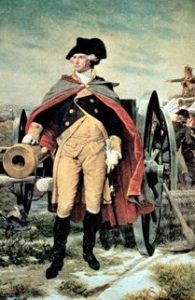
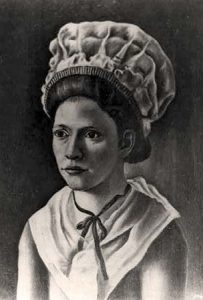 How many Generals can say that a housewife saved their life? Not many, I’m sure. Most housewives would never get near enough to a general in combat to do anything, but in the 1700s, things were different. Of course, it wasn’t like Philadelphia housewife and nurse Lydia Darragh, got out there and fought along-side General Washington and his Continental Army, but she was, nevertheless, able to single-handedly save their lives when she overheard the British planning a surprise attack on Washington’s army for the following day. Some say this is just a legend, and I guess we will never know for sure, but the story has endured for 240 years, which says something to me.
How many Generals can say that a housewife saved their life? Not many, I’m sure. Most housewives would never get near enough to a general in combat to do anything, but in the 1700s, things were different. Of course, it wasn’t like Philadelphia housewife and nurse Lydia Darragh, got out there and fought along-side General Washington and his Continental Army, but she was, nevertheless, able to single-handedly save their lives when she overheard the British planning a surprise attack on Washington’s army for the following day. Some say this is just a legend, and I guess we will never know for sure, but the story has endured for 240 years, which says something to me.
This historic event happened on December 2, 1777, during the occupation of Philadelphia. British General William Howe had stationed his headquarters across the street from the Darragh home. When Howe’s headquarters proved too small to hold meetings, he commandeered a large upstairs room in the Darraghs’ house. Although uncorroborated, family legend holds that Mrs. Darragh used to eavesdrop and take notes on the British meetings from an adjoining room and would conceal the notes by sewing them into her coat before passing them onto American troops stationed outside the city. It was a critical mistake on the part of the British, and the ingenious way of passing the information worked very well for the patriots.
On the evening of December 2, 1777, Darragh overheard the British commanders planning a surprise attack on Washington’s army at Whitemarsh, Pennsylvania, for December 4th and 5th. Somehow, it completely amazes me that they would be so careless with the information, especially considering the fact that they were in the home of the enemy. I guess they assumed that the housewife would have no idea what the “great military minds” were thinking or talking about, nor that she would have any way to pass the information to anyone who could do anything about it. I’m sure they were completely shocked when they realized that she had tipped General Washington off to the plot, and saved the lies of him and his army…as well as saving the day.
Using a cover story that she needed to buy flour from a nearby mill just outside the British line, Darragh passed the information to American Lieutenant Colonel Thomas Craig the following day. The British marched towards Whitemarsh on the evening of December 4, 1777, and were surprised to find General Washington and 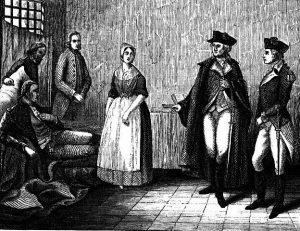
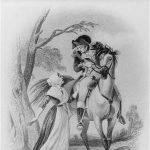 the Continental Army waiting for them. After three inconclusive days of skirmishing, General Howe chose to return his troops to Philadelphia. It’s an amazing victory for General Washington and his Continental Army, and it all happened because a patriot housewife turned spy for her country. When you think about it, she already had the perfect disguise for the job. It is said that members of the Central Intelligence Agency still tell the story of one of the first spies in American history.
the Continental Army waiting for them. After three inconclusive days of skirmishing, General Howe chose to return his troops to Philadelphia. It’s an amazing victory for General Washington and his Continental Army, and it all happened because a patriot housewife turned spy for her country. When you think about it, she already had the perfect disguise for the job. It is said that members of the Central Intelligence Agency still tell the story of one of the first spies in American history.
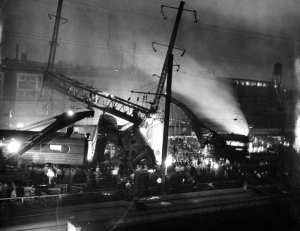 I always thought that train travel was similar to air travel, and accidents were not very common. Unlike air travel, train derailments are really quite common, mostly because they are like flat tires on cars…they do happen, and depending on how fast you’re going and where you are, it can be a minor delay, or a major problem. Having a flat tire in your own driveway is no big deal, but when a tire explodes on the highway…that’s a major problem. Blowouts have been known to cause terrible accidents and deaths. Now, consider that there are over 170,000 miles of railroad track in the United States. The possibilities suddenly seem endless. The good news is that many of these “derailments” are very minor and bring no injury or death, but that is not always the case. Speed plays a huge role in the outcome of a derailment, and I don’t mean that the train was necessarily speeding, just that it was going faster than the slow, “in the yard” pace.
I always thought that train travel was similar to air travel, and accidents were not very common. Unlike air travel, train derailments are really quite common, mostly because they are like flat tires on cars…they do happen, and depending on how fast you’re going and where you are, it can be a minor delay, or a major problem. Having a flat tire in your own driveway is no big deal, but when a tire explodes on the highway…that’s a major problem. Blowouts have been known to cause terrible accidents and deaths. Now, consider that there are over 170,000 miles of railroad track in the United States. The possibilities suddenly seem endless. The good news is that many of these “derailments” are very minor and bring no injury or death, but that is not always the case. Speed plays a huge role in the outcome of a derailment, and I don’t mean that the train was necessarily speeding, just that it was going faster than the slow, “in the yard” pace.
When high speed trains first came out, they seemed pretty risky, and maybe they were, but it was only because engineers weren’t used to those speeds, and possibly the equipment wasn’t ready for those speeds 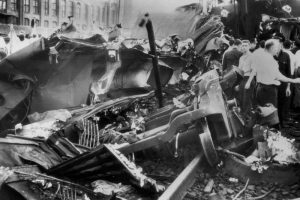 either. That would become all to obvious on September 6, 1943, when an apparent defect in an older car attached to the train, combined with the placement of a signal gantry resulted in a deadly accident. The train was called the Congressional Limited and was a newly designed train that carried its passengers through the Northeast corridor at the previously unheard-of speed of 65 miles per hour. The Congressional Limited was traveling between New York City and Washington DC, and had just left Philadelphia. It began to pick up speed as it moved northeast out of the city, The dining car, that had just been added, began to experience axle problems. That day, there were so many customers seeking to ride from Washington to New York that it was decided that another dining car should be added to the train…a car of an older design. Observers near the track reported that the axle of that older car was burning and throwing off sparks. Two miles further down the track, in Frankford Junction, Pennsylvania, the axle fell off, derailing the dining car.
either. That would become all to obvious on September 6, 1943, when an apparent defect in an older car attached to the train, combined with the placement of a signal gantry resulted in a deadly accident. The train was called the Congressional Limited and was a newly designed train that carried its passengers through the Northeast corridor at the previously unheard-of speed of 65 miles per hour. The Congressional Limited was traveling between New York City and Washington DC, and had just left Philadelphia. It began to pick up speed as it moved northeast out of the city, The dining car, that had just been added, began to experience axle problems. That day, there were so many customers seeking to ride from Washington to New York that it was decided that another dining car should be added to the train…a car of an older design. Observers near the track reported that the axle of that older car was burning and throwing off sparks. Two miles further down the track, in Frankford Junction, Pennsylvania, the axle fell off, derailing the dining car.
The derailment happened just as the train was approaching a signal gantry…a steel structure built right next to 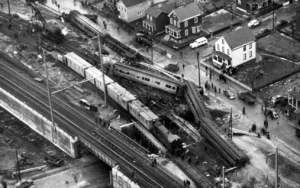 the tracks. The gantry sliced right through the dining car, instantly killing many of the passengers on that car. Seven more cars were pulled off the tracks by the dining car. In addition to the 79 people who lost their lives, almost 100 more were seriously injured. The train was carrying 541 passengers that day, many of whom were World War II soldiers returning from leave…probably the reason that an additional dining car was needed. A subsequent inquiry placed more of the blame on the location of the signal gantry than the decision to add the old dining car to the speedy new Congressional Limited, which doesn’t make sense to me, because if the axel hadn’t fallen off, the derailment would not have happened at all, and the gantry had been there for a long time.
the tracks. The gantry sliced right through the dining car, instantly killing many of the passengers on that car. Seven more cars were pulled off the tracks by the dining car. In addition to the 79 people who lost their lives, almost 100 more were seriously injured. The train was carrying 541 passengers that day, many of whom were World War II soldiers returning from leave…probably the reason that an additional dining car was needed. A subsequent inquiry placed more of the blame on the location of the signal gantry than the decision to add the old dining car to the speedy new Congressional Limited, which doesn’t make sense to me, because if the axel hadn’t fallen off, the derailment would not have happened at all, and the gantry had been there for a long time.
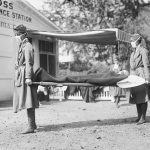
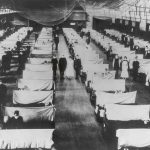 Not everyone agrees with getting the flu shot, and I get that. Still, even though there have been issues with the flu shot, it has also been something, along with medicines that has helped to prevent breakouts like the flu pandemic that hit Philadelphia on this day, September 28, 1918. It is believed that a Liberty Loan parade prompted the outbreak in Philadelphia, and before the outbreak was over, an estimated 30 million people worldwide were dead. As most of us know, influenza is a virus that attacks the respiratory system, is highly contagious, and mutates very quickly to avoid being killed by the human immune system. A prior pandemic of the flu in 1889 killed thousands all over the world, but it was nothing like the 1918 Flu Pandemic in its deadliness.
Not everyone agrees with getting the flu shot, and I get that. Still, even though there have been issues with the flu shot, it has also been something, along with medicines that has helped to prevent breakouts like the flu pandemic that hit Philadelphia on this day, September 28, 1918. It is believed that a Liberty Loan parade prompted the outbreak in Philadelphia, and before the outbreak was over, an estimated 30 million people worldwide were dead. As most of us know, influenza is a virus that attacks the respiratory system, is highly contagious, and mutates very quickly to avoid being killed by the human immune system. A prior pandemic of the flu in 1889 killed thousands all over the world, but it was nothing like the 1918 Flu Pandemic in its deadliness.
It is thought that the 1918 flu pandemic originated with a bird or farm animal in the American Midwest early that year. It may have traveled among birds, pigs, sheep, moose, bison, and elk, eventually mutating to the version that took hold in the human population that year. Like most outbreaks, this one started slowly, but as people moved from place to place, and others came in to help, it began to spread like wildfire. Once it spread to Europe later in the year, through some of the 200,000 American troops shipped out to fight in World War I, it was out of control. It affected every area of life, and people wore masks to avoid contact with the virus.
By June 1918, it had largely disappeared in North America, but only after taking a considerable toll on the people. Over the summer of 1918, it spread quickly over Europe. It’s first stop seems to have been in Spain, and it took so many lives there, that it was named the Spanish Flu. This flu was highly unusual, because it seemed to affect strong people in the prime of their lives rather than babies and the elderly. By the end of the summer, about 10,000 people were dead. In most cases, hemorrhages in the nose and lungs killed victims within three days. By fall, it was completely out of control. By the time it reached London and Boston in 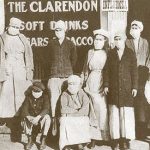
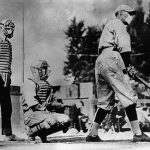 September, it was a far worse strain that it had been before. Twelve thousand soldiers came down with the flu in Massachusetts in mid-September. Philadelphia was the hardest hit city in the United States with a loss of nearly 12,000. The whole city was quarantined. In the United States, five out of every thousand people fell victim to the flu. Other countries were far worse, some as much as ten, fifteen or even thirty five per thousand, with 20 million people dying in India alone. In the end, more people died from the influenza pandemic, than from all of the battles of World War I combined.
September, it was a far worse strain that it had been before. Twelve thousand soldiers came down with the flu in Massachusetts in mid-September. Philadelphia was the hardest hit city in the United States with a loss of nearly 12,000. The whole city was quarantined. In the United States, five out of every thousand people fell victim to the flu. Other countries were far worse, some as much as ten, fifteen or even thirty five per thousand, with 20 million people dying in India alone. In the end, more people died from the influenza pandemic, than from all of the battles of World War I combined.
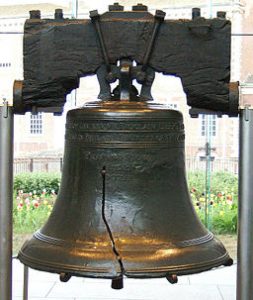 Everyone has heard of the Liberty Bell. The bell was ordered in 1751, to commemorate the 50th anniversary of Pennsylvania’s original constitution. The Pennsylvania Provincial Assembly ordered the 2,000 pound copper and tin bell. The bell was placed in the Pennsylvania State House, which is now known as Independence Hall. The bell rang out summoning citizens to the first public reading of the Declaration of Independence, by Colonel John Nixon. The document was adopted by delegates to the Continental Congress meeting in the State House on July 4th, however, the Liberty Bell, inscribed with the Biblical quotation, “Proclaim Liberty Throughout All the Land unto All the Inhabitants Thereof,” was not rung until the Declaration of Independence was returned from the printer on July 8th.
Everyone has heard of the Liberty Bell. The bell was ordered in 1751, to commemorate the 50th anniversary of Pennsylvania’s original constitution. The Pennsylvania Provincial Assembly ordered the 2,000 pound copper and tin bell. The bell was placed in the Pennsylvania State House, which is now known as Independence Hall. The bell rang out summoning citizens to the first public reading of the Declaration of Independence, by Colonel John Nixon. The document was adopted by delegates to the Continental Congress meeting in the State House on July 4th, however, the Liberty Bell, inscribed with the Biblical quotation, “Proclaim Liberty Throughout All the Land unto All the Inhabitants Thereof,” was not rung until the Declaration of Independence was returned from the printer on July 8th.
The bell was made of inferior materials, and cracked during the first test. It was recast twice and finally hung from the State House steeple in June 1753. The bell was rung on special occasions, such as when King George III ascended to the throne in 1761, and to call the people together to discuss such important things as the controversial Stamp Act of 1765. With the outbreak of the American Revolution in April 1775, the bell was rung to announce the battles of Lexington and Concord. Of course, the most famous time it was rung was July 8, 1776, when it summoned Philadelphia citizens for the first reading of the Declaration of Independence.
When the British were advancing on Philadelphia in the fall of 1777, the bell was removed and hidden in Allentown to protect it from being melted down by the British to be used for cannons. Following the defeat of the British in 1781, the bell was returned to it’s place in Philadelphia which was the nation’s capital from 1790 to 1800. In addition to marking important events, the bell was used as a part of the celebrations such as George Washington’s birthday on February 22, and Independence Day on July 4. In 1839, bell was first given it’s name when it was coined the Liberty Bell in a poem.
As to the crack that finally made the Liberty Bell unsuitable for ringing, there has been some dispute. It was 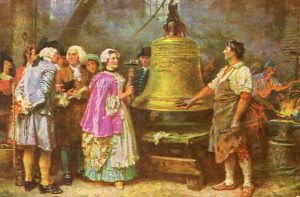 finally agreed upon that the bell suffered a major break while tolling for the funeral of the chief justice of the United States, John Marshall, in 1835, and in 1846 the crack expanded to its present size while in use to mark Washington’s birthday. After that date, it was decided that the bell was unsuitable for ringing, but it was still ceremoniously tapped on occasion to commemorate important events. On June 6, 1944, when Allied forces invaded France, the sound of the bell’s dulled ring was broadcast by radio across the United States. In 1976, the Liberty Bell was moved to a new pavilion about 100 yards from Independence Hall in preparation for America’s bicentennial celebrations. The Liberty Bell will always be a symbol of patriotism and liberty in my mind.
finally agreed upon that the bell suffered a major break while tolling for the funeral of the chief justice of the United States, John Marshall, in 1835, and in 1846 the crack expanded to its present size while in use to mark Washington’s birthday. After that date, it was decided that the bell was unsuitable for ringing, but it was still ceremoniously tapped on occasion to commemorate important events. On June 6, 1944, when Allied forces invaded France, the sound of the bell’s dulled ring was broadcast by radio across the United States. In 1976, the Liberty Bell was moved to a new pavilion about 100 yards from Independence Hall in preparation for America’s bicentennial celebrations. The Liberty Bell will always be a symbol of patriotism and liberty in my mind.

